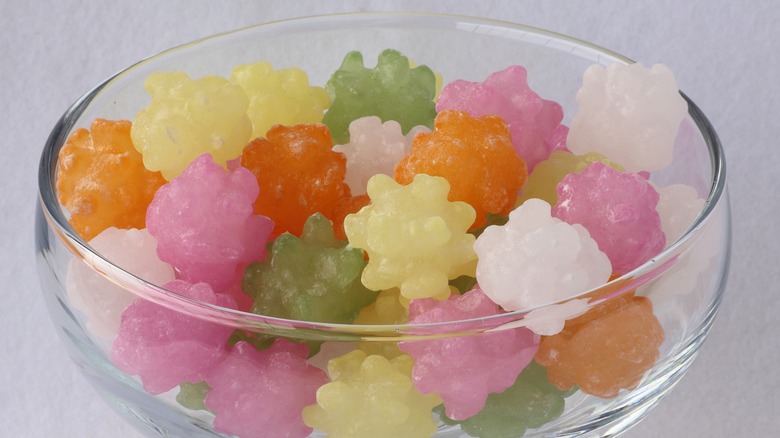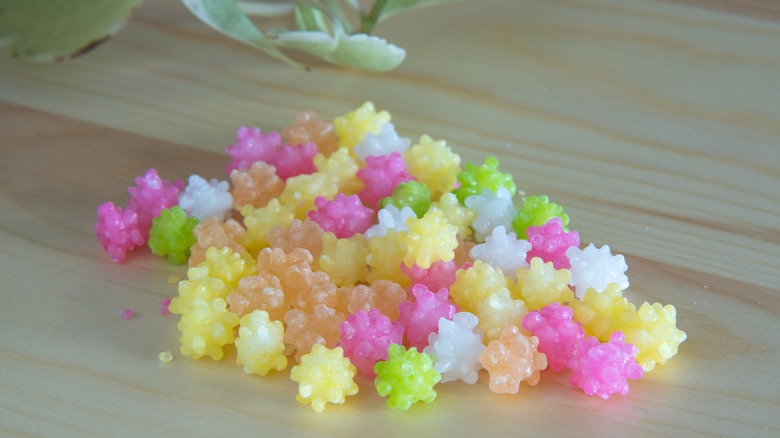The Colorful History Of Konpeito, Japan's Vibrant, Star-Shaped Treats
Many global cuisines boast a tradition of sweets that date equally far as savory dishes. Such is the case for Japan, which has a class of historic desserts called wagashi. Enjoyed in alignment with celebrations or simply alongside a cup of green tea, these small bites are a delight to the senses. Crafted for nearly 2,000 years, types like mochi are recognizable abroad, but there are many others — including eye-catching konpeito.
You may recognize these tiny, kaleidoscopic candies from popular Japanese anime shows, tokens in Nintendo games, and as a feature in the 2002 film "Spirited Away." Their star shape is formed with rock sugar sans any flavoring or fillings, but with colorants to yield a vibrant look. Traditionally a delicacy in Japan, Portuguese traders first presented the sweet during the 16th century.
At the time, sugar was a scarce commodity on the island, without any large-scale manufacturing. As a result, konpeito quickly caught on as a valued token of gratitude. Such a status became especially solidified whenever a Portuguese friar offered a capsule to a Japanese official in exchange for Christian influence in 1569. And from there, its prominence never waned.
Konpeito has been beloved in Japan since the 16th century
A brightly-colored sweet with a funky, star-like shape, it's not hard to understand konpeito's festive affiliations. Appealing to the senses from the get-go, even its name is derived from the Portuguese word for confetti. It's crafted in a wide array of colors, and modern versions have introduced flavorings, oftentimes with fruity notes like citrus, banana, strawberry, matcha, cinnamon, and more.
Nowadays, the sweets are especially interlinked with Kyoto. There, konpeito is sold in sweet bento boxes, often playfully substituting savory food. Such a serving plays on its traditional presentation in a bonbonniere, an elegant box used to gift the sweet. Plus, the city's home to Ryokujuan Shimizu, a renowned multi-generational konpeito maker. In addition to selling over 50 flavors, the shop is noted for following a traditional manufacturing method.
Such a classic style of preparation requires intricate expertise to make. Konpeito artisans pour the sugar syrup in increments over a granule for up to two weeks in duration. Each iteration adds another layer of a bumpy, uneven surface but is methodical in its desired form. Nowadays, most konpeito production has become industrialized, making the snack widespread and affordable. Nonetheless, konpeito's cultural relevance, as well as intrigue in its traditional artisanship, persists.

